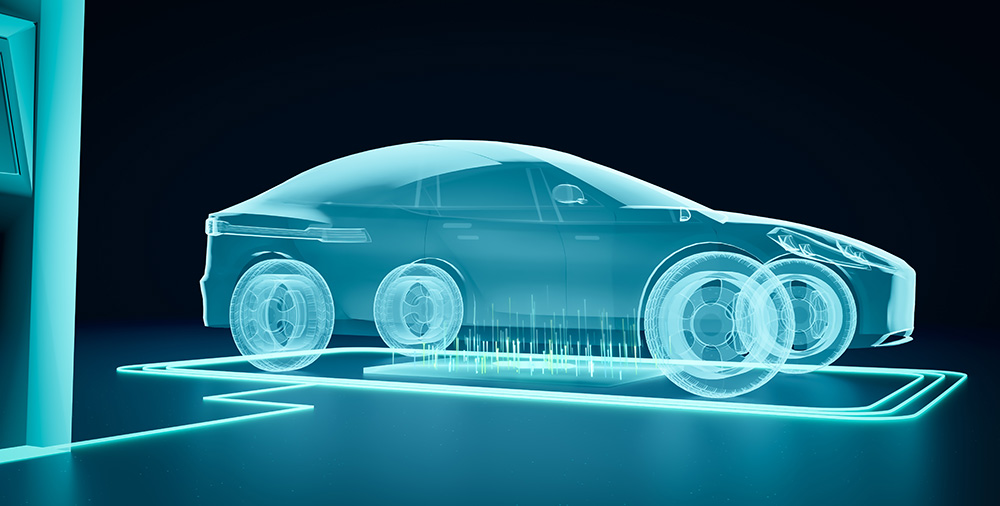
Ditch the plug! Make wi-fi EV charging a actuality now!
Distinctive parts guarantee security, effectivity and reliability.
Think about an EV charging expertise that’s as seamless and intuitive as parking your automotive—simply “park, cost, and go.” For the end-user, the attraction is obvious:
- No extra heavy cables
- No fumbling with connectors
- No publicity to probably soiled or broken charging tools
EV house owners envision pulling into their storage, a chosen parking spot, or a public charging station and effortlessly charging their automobile with out ever leaving the motive force’s seat. This comfort makes each day charging extra user-friendly and enhances security by eradicating bodily connectors altogether.
Understanding this user-centric imaginative and prescient is essential for wi-fi EV charging system designers. By delivering environment friendly, dependable, and quick wi-fi charging, designers can unlock a game-changing profit that mixes ease, consolation, and peace of thoughts for EV drivers.
Whereas present wi-fi EV chargers can provide as much as 20 kW to cost batteries in 4 to 6 hours, future wi-fi chargers will ship 100 kW and have the ability to improve battery cost state by 50 % in beneath 20 minutes.1
Wi-fi charging stations have to be quick, protected, environment friendly, and dependable to speed up adoption.
This text explores the technical concerns and modern approaches required to attain this expertise, making certain wi-fi charging options meet efficiency and person expectations within the ever-evolving EV panorama. It presents 4 parts that deal with the important must create designs that guarantee charger circuit safety, security monitoring, and quick, environment friendly energy supply.
Wi-fi charger description
A wi-fi charger is an AC-AC converter that converts 50/60 Hz energy to energy within the frequency vary of 130 kHz. Resonant frequency will depend on topologies and Energy semi conductor expertise (Si/SiC/GaN). Energy supply could be as much as 20 kW. Determine 1 illustrates a wi-fi charger and its load, the EV. The most important energy and management circuit blocks within the charger and the automobile are additionally outlined.

Security and reliability concerns embrace overcurrent safety, overvoltage safety, overtemperature, and floor present monitoring. Optimizing effectivity requires designing with low energy loss parts. Determine 2 illustrates parts that present circuit safety and excessive effectivity for the circuits of a typical wi-fi charger design. The sensors provide temperature monitoring and enclosure entry safety.
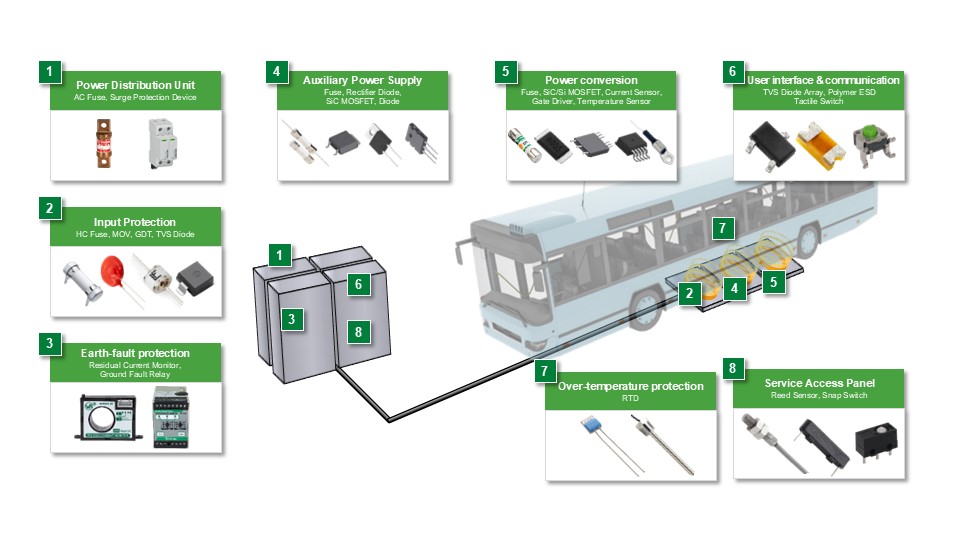
Figures 3 and 4 present an instance wi-fi charger in a extra detailed block diagram. The adjoining desk in Determine 3 lists the parts that equip the charger with safety from electrical hazards. Determine 4 primarily reveals the parts that produce effectivity and demanding sensing.
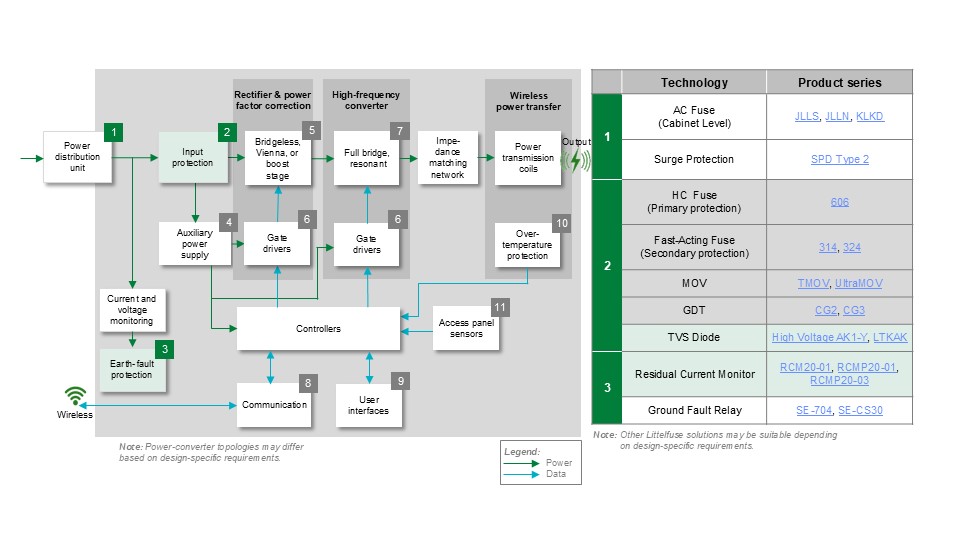
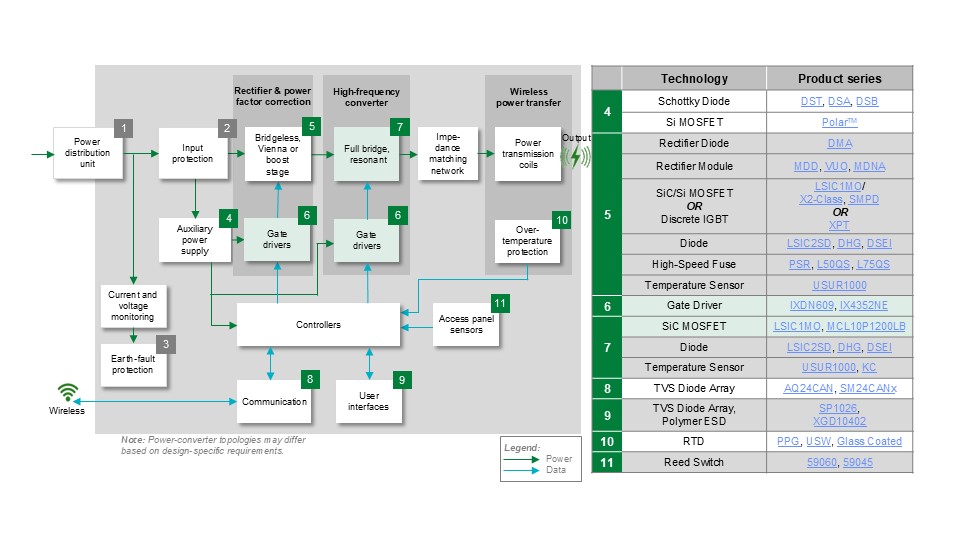
Circuit safety and security parts
The Enter Safety circuit homes the principle overcurrent and overtemperature safety parts. Really helpful parts embrace a excessive present fuse for the ability supply circuitry and a fast-acting fuse to guard the low energy Auxiliary Energy Provide and the management circuitry. A metallic oxide varistor (MOV) in collection with a gasoline discharge tube absorbs overvoltage transients. Overvoltage transients consequence from lightning which may induce a voltage surge on the AC enter traces. As well as, electrical hundreds switching on and off can induce AC line voltage surges.
A particular element that may seize parts of a voltage transient that has handed via the MOV and gasoline discharge tube is a transient voltage suppressor (TVS) diode. TVS diodes have decrease clamping voltages, and so they function a lot quicker than MOV gadgets. The particular diodes can guarantee safety of downstream circuitry. They’ll soak up a one kA pulse and reply to a transient in beneath one nanosecond. TVS diodes can present safety from electrostatic discharge (ESD) through-the-air strikes of as much as 15 kV and from direct contact discharges as much as 8 kV. Bi-directional fashions and fashions which might be lower than one tenth the dimensions of conventional discrete options can be found. TVS diodes can have axial lead or floor mount type components. Determine 5 reveals a TVS diode and its practical diagram, utilizing the AK1-Y Collection TVS Diode from Littelfuse for instance. This element will dispense the mandatory safety from each ESD and different transients to keep away from harm to semiconductor circuitry within the wi-fi charger.

With programs resembling wi-fi EV chargers, monitoring floor currents is crucial for the safety of personnel. The Earth-Fault Safety circuit performs the bottom present monitoring operate. Littelfuse gives new residual present displays for this circuit that detect each AC and DC floor fault currents. The brand new collection, the RCMP20 Residual Present Monitor Collection for Mode 2 and Mode 3 wi-fi charging stations, gives the most important present transformer aperture to assist larger AC charging currents. The residual present displays have delicate, typical journey thresholds of 4.5 mA DC and 22 mA AC. Moreover, the displays make the most of built-in conductors with larger cross-sectional areas to supply higher thermal administration and cut back the rise within the printed circuit board (PCB) temperature. The result’s a extra compact and dependable design that doesn’t compromise efficiency. As well as, the displays have excessive immunity to electromagnetic interference (EMI), which improves charger circuit reliability and minimizes false circuit journeys. The displays could be mounted both horizontally or vertically to permit designers flexibility to optimize area utilization. Determine 6 shows the fashions within the Residual Present Monitor collection. (View the video.)
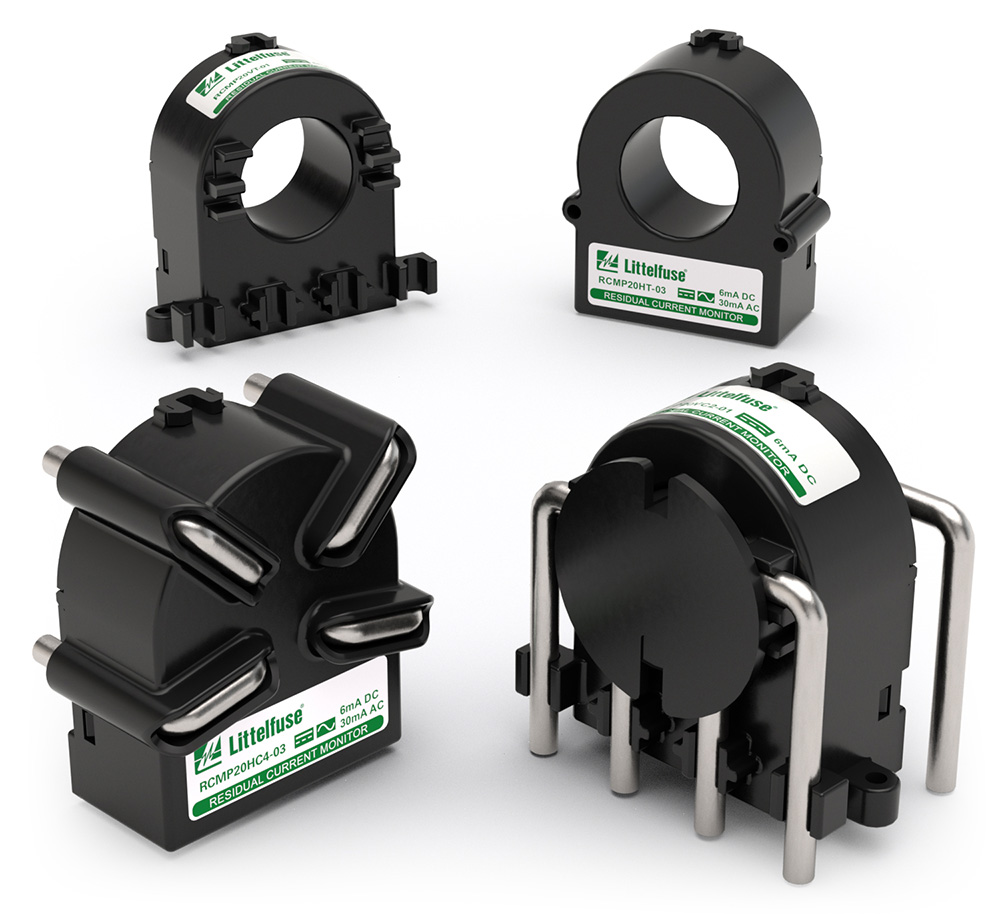
Parts for maximizing effectivity and reliability
Programs, resembling wi-fi charging programs, eat a considerable quantity of energy. Optimizing a design for effectivity reduces energy consumption and utility prices and reduces warmth buildup. Diminished generated warmth lowers the interior temperature rise within the system and enhances system reliability. The usage of two parts within the energy supply circuitry can contribute to larger effectivity and larger reliability. The 2 parts are gate drivers and SiC MOSFETs.
Gate drivers management the Energy SiC MOSFETs and the IGBTs within the Bridgeless, Vienna, or Increase Rectifier and the Full Bridge, Resonant Excessive-Frequency Converter circuits. The drivers have separate 9 A supply and sink outputs, which allow programmable turn-on and turn-off timing whereas minimizing switching losses. An inside unfavourable cost regulator gives a selectable unfavourable gate drive bias for improved dV/dt immunity and quicker turn-off. The gate drivers reduce switching instances with turn-on and turn-off propagation delay instances of usually 70 and 65 nanoseconds. The standard worth for rise time and fall time outputs is ten nanoseconds.
To make sure strong operation, the gate drivers have desaturation detection circuitry which senses a SiC MOSFET overcurrent situation and initiates a tender flip off. This circuit prevents a probably damaging dV/dt occasion. Further safety options embrace UVLO detection and thermal shutdown. Determine 7 illustrates theLittelfuse IX4352NE SiC MOSFET and IGBT Driver IC, a high-speed gate driver with options that present dependable management of a SiC MOSFET.
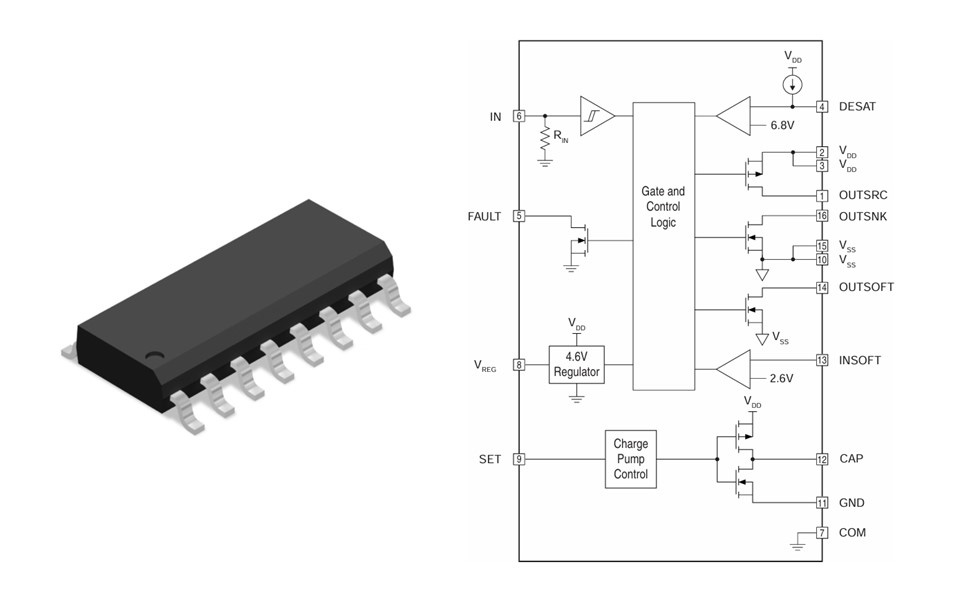
Excessive-power SiC MOSFETs drive the ability transmission coils. Half-bridge packages have a Drain-Supply voltage of 1200 V and a drain present of as much as 19.5 A. Together with delivering excessive energy, the MOSFETs reduce on-state energy consumption with a typical RDS(ON) of a low 160 mΩ. SiC MOSFETs have low switching energy losses resulting from a typical low gate cost, brief turn-on, and turn-off delay instances, and present rise and fall instances.
A DCB-based remoted package deal improves thermal resistance and energy dealing with functionality. A sophisticated topside cooled package deal simplifies thermal administration. The Littelfuse half-bridge SiC MOSFET MCL10P1200LB Collection, proven in Determine 8, yields excessive effectivity with superior packaging to scale back element depend and to optimize for prime reliability.
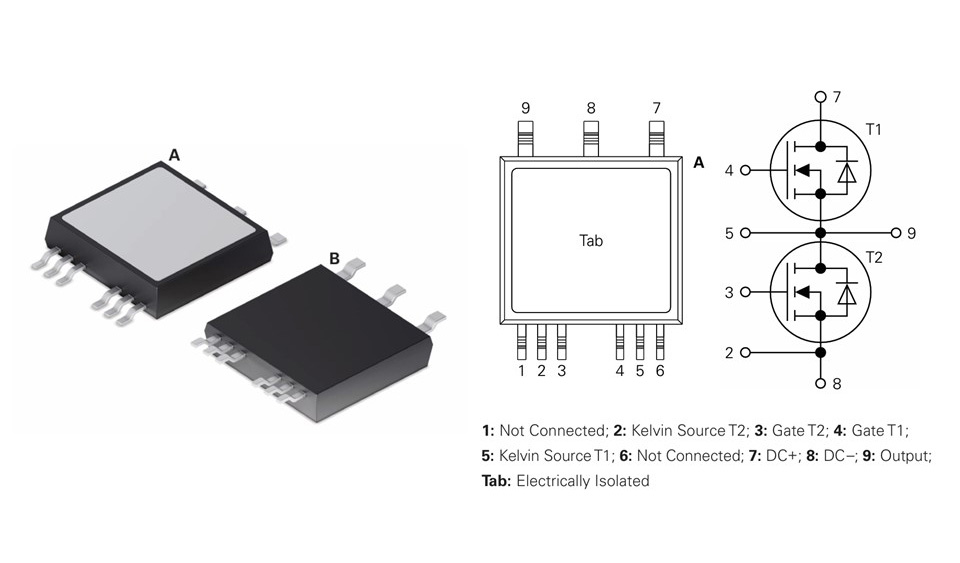
Collaborate with specialists for a dependable wi-fi charging answer
Safety towards electrical hazards resembling overcurrent, overvoltage, ESD, and overtemperature is essential for making certain dependable operation. The 4 advisable parts described within the previous paragraphs allow designers to develop strong, protected, and dependable wi-fi EV charging stations.
To develop a strong and environment friendly product, designers ought to think about using the element producers’ utility engineers to avoid wasting design time and compliance prices. The appliance engineers will help with the next:
- Choice of cost-effective safety, sensing, and high-efficiency parts
- Data of the relevant security requirements
- Littelfuse can carry out pre-compliance testing to keep away from compliance check failures and save on mission delays and added prices for a number of compliance check cycles.
Collaborating with the element producer’s utility engineers and utilizing the advisable parts will assist to supply strong, dependable, and environment friendly wi-fi EV charging options.
To be taught extra about circuit safety, sensing, and energy administration options for wi-fi EV charging design, obtain the information, Supercharged Options for EV Charging Stations, courtesy of Littelfuse, Inc.
Contact Littelfuse for extra data on making your wi-fi charging system design protected, environment friendly and dependable.
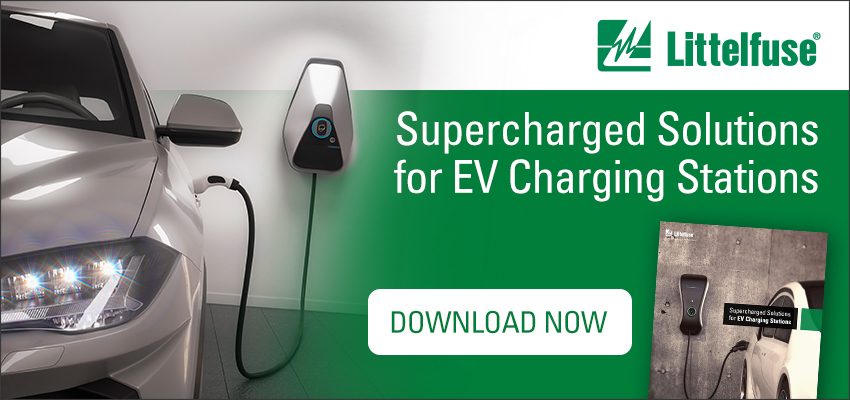
References:
1L. Blain. World’s quickest wi-fi EV charger unlocks 100 kW parking spots. New Atlas. March 18, 2024.


